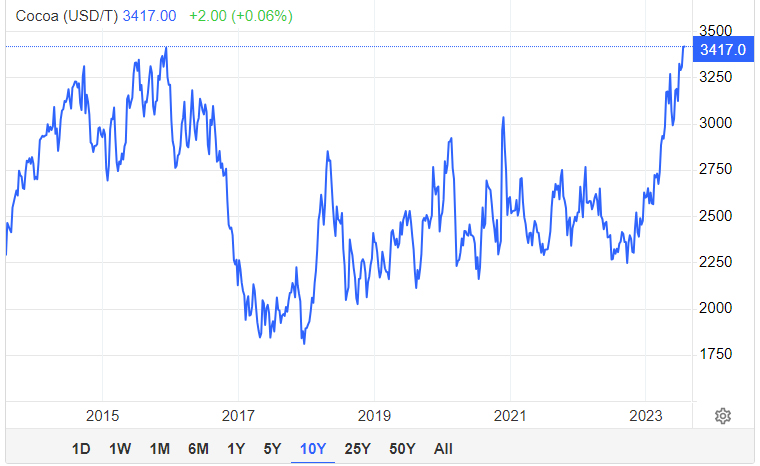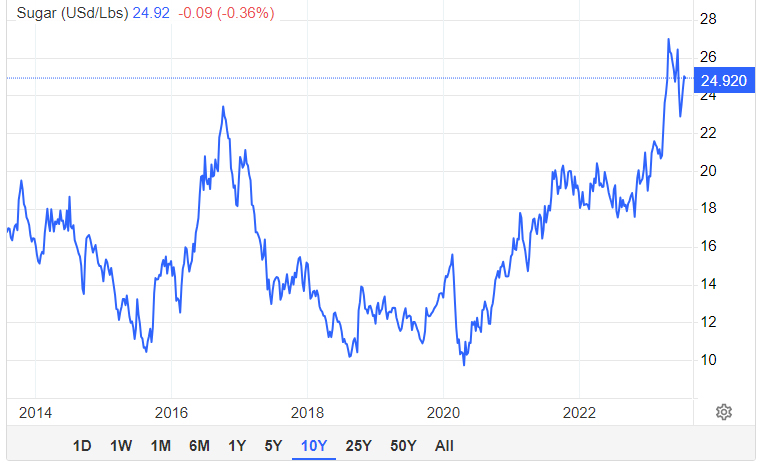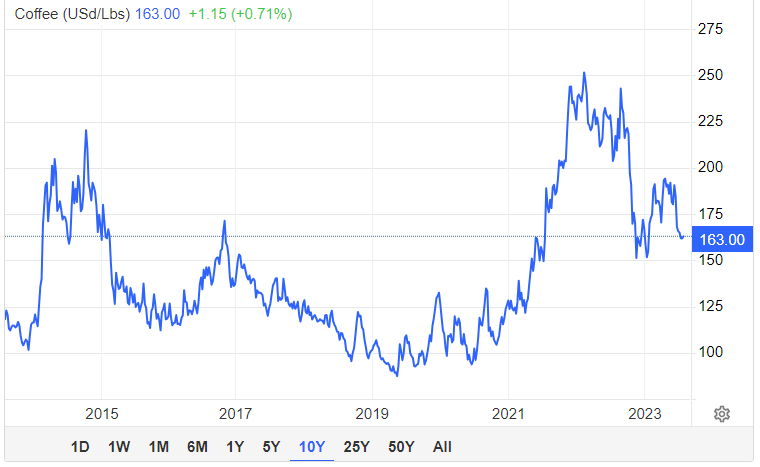
Content supplied by Rabobank
Chocolate lovers look set to be paying more for their favourite indulgence for the foreseeable future, with the price of two key ingredients – cocoa and sugar – likely to remain at high levels in coming months, according to food and agribusiness banking specialist Rabobank.
Retail prices for chocolate have been climbing in recent months, as manufacturers around the world grapple with soaring input prices, especially cocoa, which has increased 27 per cent in price in the past year, and sugar, which has also been trading at record highs, the bank said in a newly-released podcast ‘Sweet inflation and the Chocolate Factory’.
And prices for cocoa, in particular, may rise even higher.
RaboResearch associate analyst Pia Piggott said global cocoa prices had been on an “upward trajectory” since September last year, as the world heads into the potential third year of a cocoa supply deficit, due to poor growing conditions reducing production in the major cocoa-growing regions in West Africa.
“The major production regions, particularly in Ivory Coast – which accounts for more than 40 per cent of global cocoa production – have had very wet conditions and flooding, which has been causing rotting and disease in the trees
In addition the poor production volumes are also a result of reduced use of fertiliser because of lower fertiliser availability,” she said. In addition, Ms Piggott said, the risk of further negative impacts on global cocoa production due to the emergence of an El Niño weather pattern had led the bank to forecast cocoa prices to stay at elevated levels well into 2024.

Not so sweet
Ms Piggott said adding further upward pressure to the cost of chocolate was the high price of sugar, which typically accounts “for approximately 60 per cent of the weight of an average bar of milk chocolate”.
“ICE (Intercontinental Exchange) raw sugar is up 20 per cent year to date, so for manufacturers, if 60 per cent of your goods are sugar, that is a substantial input price increase,” she said.
Ms Piggott said while expectations of a large Brazilian sugar harvest had recently “taken some of the steam out” of international sugar prices, the bank was still expecting only a small global surplus in 2023/24, supporting continued elevated prices".
“At this point, we are forecasting a modest 1.5 million metric tonne surplus for global sugar supplies in 2023/24, so that’s quite small. And we’re expecting that if there’s any increase in the severity of El Niño, that would certainly mean downward revisions to sugar production in various countries and possibly tip the scales back into a global deficit, with more demand than supply.
“So the potential is for sugar prices to really stay quite elevated.”

‘A glass and a half’
There was better price news though when it came to another key chocolate ingredient, dairy, Rabobank said.
Speaking on the podcast, RaboResearch senior dairy and food retail analyst Michael Harvey said a decline from the record and near-record prices seen a year ago for a number of dairy commodities and ingredients was providing some relief for chocolate manufacturer margins.
“This time last year, there wasn’t a lot of milk supply around globally and prices for milk powder and milk solids – which are key ingredients in chocolate – were at near-record highs, but fast forward to where we are now and that broader dairy commodity complex has come back to more normal trading conditions,” he said.
“And our view at the moment is that we are going to have a subdued price environment for those dairy ingredients in the short term.
“So that’s something that will be feeding through the supply chain to food manufacturers, and, certainly for chocolate manufacturers, that means the dairy component will be more affordable.”
Consumer response
The Rabobank podcast said confectionery manufacturers had been taking steps to offset cost pressures in the system – mindful to avoid too much “demand destruction” from higher prices leading to consumers buying less chocolate.
Mr Harvey said the bank was closely watching the “consumer response” to higher chocolate prices.
“Because there is belt tightening going on and there’s going to be reduced spending on discretionary products, that might mean a little less chocolate on the go and less impulse purchasing out and about,” he said. “However consumers will still likely want to have some indulgence and eat chocolate when they are at home.”
And there are “still some bargains around” for consumers when it comes to buying chocolate treats, Ms Piggott said. “With manufacturers trying to keep market share in the category, they are still putting some of our favourite chocolates on sale to keep us buying them,” she said.

3 Comments
Cocoa has a relatively long cycle to its growth/production/distribution. Milk has a relatively shorter cycle. Fertilizer prices were high and have eased significantly, unsurprising you won't see that easing in the cocoa prices until it feeds through a growth cycle. Should be pretty easy to understand. Add to that more and more rainfall in coastal areas with global warming increasing.
Virtually all our food is based on fossil fuels via the haber process. If the gas stops flowing or becomes more expensive, food shocks around the world are inevitable. Add to that increasingly bad weather and we have a double whammy.
Dark chocolate is easier to have less so perhaps the tradeoff is worth it if dark chocolate prices are on the rise in the near future.
Dark chocolate, raspberries and red wine are my three favourite decadent treats.
At least the price of red wine hasn’t escalated much.
Raspberries have always been outrageously expensive
We welcome your comments below. If you are not already registered, please register to comment.
Remember we welcome robust, respectful and insightful debate. We don't welcome abusive or defamatory comments and will de-register those repeatedly making such comments. Our current comment policy is here.